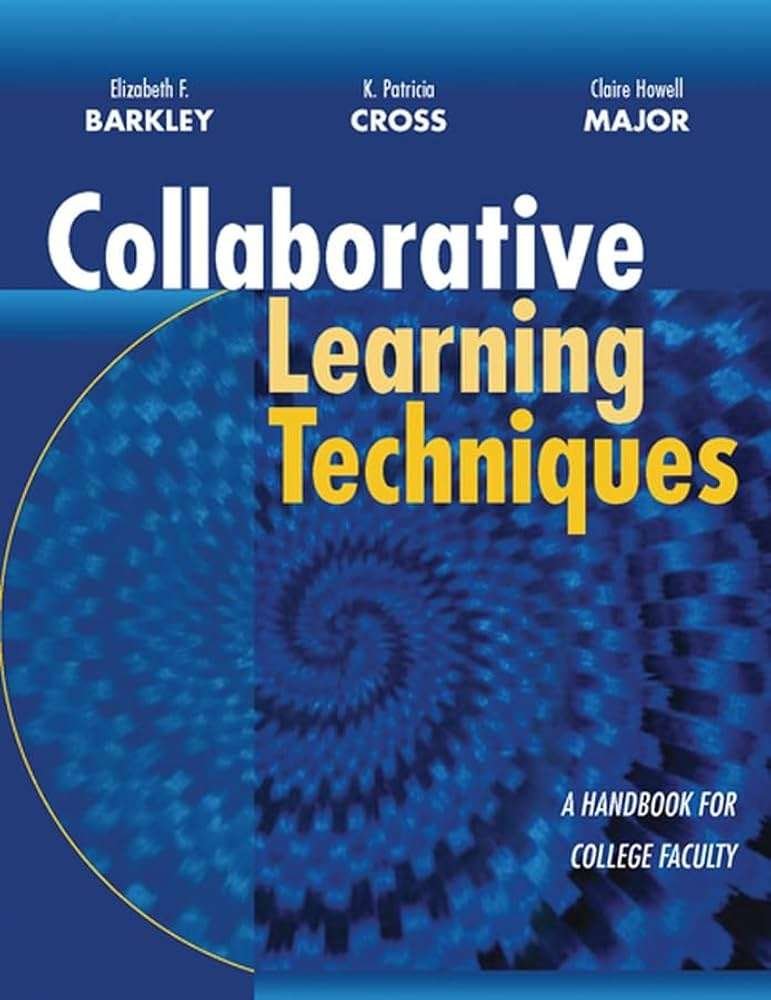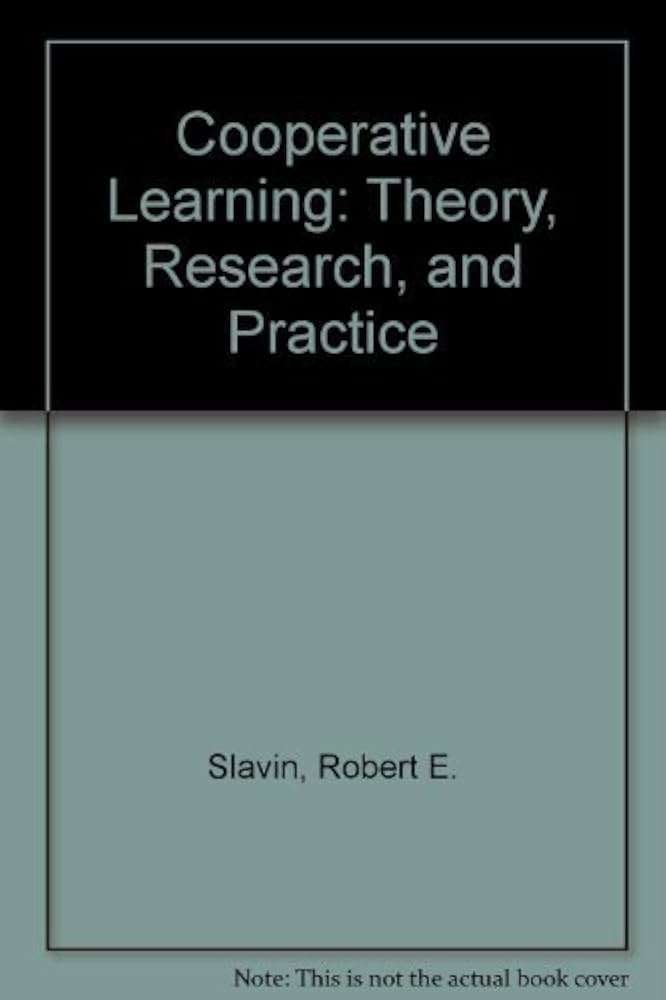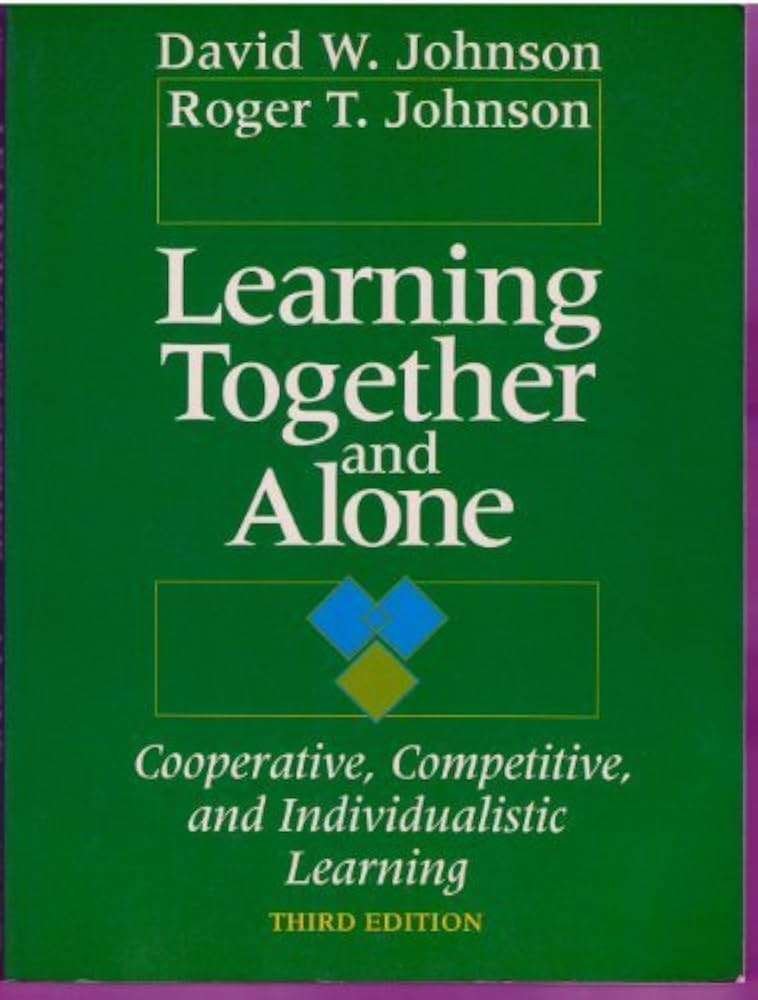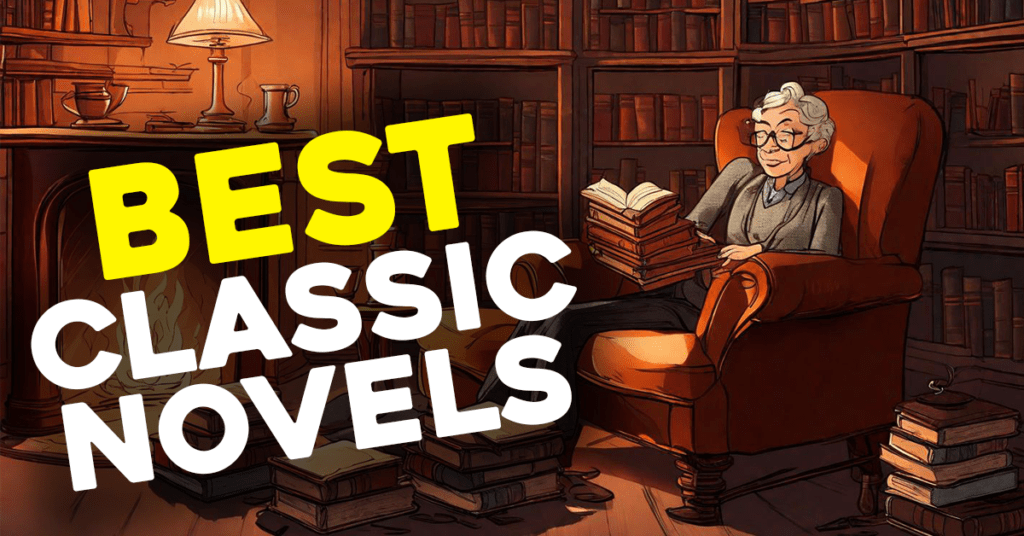Introduction
As you work on your UX writing portfolio, collaborative learning can be a powerful educational model. It utilizes the strengths and experience of each member, promoting profound study in a topic area as well providing abilities such as conversation proficiency, teamwork capabilities along with problem-solving techniques. However, in an interconnected world as ours, where anything and anyone can easily share information with the magnitude of a click; collaboration becomes crucial. However, in math classrooms or any other discipline beneficial from this teaching pedagogy, there are five key books that all together provide a nuanced view and use cases to create an active learning space.

Books for Collaborative Learning
The following five books are centered around fostering collaborative learning and offer research-grounded strategies with practical wisdom to help teachers cultivate student collaboration:
1. “Collaborative Learning Techniques: A Handbook for College Faculty” by Elizabeth F. Barkley, K. Patricia Cross, and Claire Howell Major
- Overview: Collaborative Learning TechniquesThis is an invaluable resource for any teacher requiring help to apply collaborative learning in classroom. There are various types of pedagogical techniques, applicable from simple practices to sophisticated productions for students working collaboratively and learning from each other. The book suggests strategies for well-designed, facilitated and evaluated collaborative learning.
- Key Insights:
- Over 30 Collaborative Learning Techniques: The book offers more than three-decade types of activities, spanning the spectrum from simple to complex and knowledge sharing to critical thinking. The tips mentioned in this article can be transferred to any field, and also different levels of schooling.
- Instructions for Designing Collaborative Activities: The text offers general principles and examples of how to design collaborative learning activities that support course outcomes in ways that engage students. They stress clear directions, knew what their roles were and had structured activities.
- Assessment and Feedback: The book includes techniques for assessing students’ collaborative work using self-assessment, peer assessment, or group assessment. It also gives a tactics for delivering very helpful comments to get students.
- Applicability: Educators can take this text and its plethora of methods for “Collaborative Learning Techniques” to create collaborative learning dimensions in their own classrooms. Your class does not have to meet the entire semester — or even for an hour — this book provides practical ideas around which you can get your students collaborating.

2. “The Collaborative Classroom: Teaching Children with Special Needs” by Sue Roffey
- Overview: Collaborative Classroom: How can you empower learning as an inclusive space for all students, with a focus on those who have special needs? In both Sue Roffey describes how to establish a common cooperative culture in which diversity has its natural place, within the classroom through strategies. This book offers a practical guidance to teachers, in adapting collaborative learning methods that address the needs of each and every student.
- Key Insights:
- Inclusive Collaboration: Roffey Involvement of All Pupils ti Collaborative Learning — Reysures all pupils regardless if ability able to participate in collab learning Moreover, she provides methods for modifying activities to suit varying learning styles and needs.
- Cultivating Social: Emotional Learning Book : The book elaborates on how to enable collaboration in the class, setting group work norms and building empathy with peer support as well.
- Roffey: Practical strategies for SEN: Roffey suggests many practical guidelines when working with pupils who have special educational needs in collaborative settings, including using visuals and visual keys to help students understand what is being done.
- Practical Application: Teachers can apply the strategies from “The Collaborative Classroom” into practice in order to generate more inclusion and support amongst students. Teachers can eliminate concerns through cooperative activities that reflect the needs of every student, having each one play a role and excel.
3. “The Power of Collaborative Learning: Enhancing Teamwork and Inclusion” by Kate Scorgie and Roger Slee
- Overview: The Power of Collaborative Learning provides ways to enhance classroom teamwork and inclusion through collaborative learning. According to the authors, collaborative learning does more than merely benefiting results because it creates a common ground among students from all kinds of backgrounds. The book provides methods by which to design CCL experiences that build both academic and SEL competencies.
- Key Insights:
- Teamwork & Social Skills: Despite of individual assessments, this book promotes to build teamwork/ social skills by working together with classmates. Collaborative activities—as Scorgie and Slee describe—build communication skills, conflict resolution techniques, working well with others.
- Inclusion through Collaboration: The authors explain how collaborative learning can support inclusion by giving all students a chance to be contributors, irrespective of their background or abilities. Strategies for Inclusive and Supportive Group Dynamics
- Fostering Academic and Social Results: The text talks about how collaboration can have dual impact, starting with academic achievement to social-emotional maturity. There are also examples of collaborative activities that do both in the paper.
- Practical Application: Based on the lessons from “The Power of Collaborative Learning”, educators can now design activities that support academic and social dimensions. A more inclusive and effective learning environment can be created by providing both students a fair chance of being regarded equally in the classroom with collaborative experiences.
4. “Cooperative Learning: Theory, Research, and Practice” by Robert E. Slavin
- Overview: Under the contributive learning theory, Slavin and others observed that cooperative efforts help kids to build a common identity with their classmates based on shared personal goals. — Robert E. Slavin’s Cooperative Learning (1995) One of the premier researchers in this area, Slavin provides a solid grounding for cooperative learning and suggestions about how to carry it into practice. Based on the research, in that text they present what cooperative learning is and how it can improve academic achievement and social development.
- Key Insights:
- Teachable Points: Slavin discusses how research has shown group goals and individual accountability increase the effectiveness of cooperative learning structures. In this he describes how these elements combine to make success from cooperative learning.
- The Dynamics of Groups and Organizations: This book teaches you how to organize groups well, being the size of a group or roles their members play as well in task assignment welfare. Slavin underscores the significance of enacting a positive interdependence among group members.
- Studying Cooperative Learning: Slavin offers advice on how to evaluate cooperative learning, with assessment suggestions for several types of group work. Also, he touches on the importance of rewarding feedback for cooperative behaviours.
- Practical Application: Teachers might use the research-based strategies of “Cooperative Learning” in designing and implementing cooperative learning activities in their classrooms. Educators can establish more effective and meaningful collaborative learning experiences by highlighting group goals, holding students responsible individually as well as in groups,and fostering positive interdependence.

5. “Learning Together and Alone: Cooperative, Competitive, and Individualistic Learning” by David W. Johnson, Roger T. Johnson, and Karl A. Smith
- Overview: The classic text by David and Roger Johnson with Karl Smith titled Learning Together and Alone looks at various approaches to leaning (cooperative, competitive, individualistic) as they relate to student outcomes. In their seminal book, The Handbook of Cooperative Learning (Griffin & Griffin, 1988), the authors review decades’ worth of cumulative research on how these different types along with other forms special learning arrangements affect academic achievement and behaviour as well homage motivation in a truly comprehensive manner. This book presents research-driven, practical guidance on building and implementing cooperative learning to support successful student performance.
- Key Insights:
- Comparing Learning Approaches: It contrasts cooperative vs.competitive and individualistic learning, listing the pros and cons for each approach Cooperative learning often results in better academic and social outcomes (Slavin et al. 2016).
- Basic Principles for Successful Cooperative Learning: Johnson, Johnson and Smith (2007) describe five basic principles of successful cooperative learning—Positive Interdependence – Individual accountability – Face-to-face interaction –Social skills –Group processing. Hence, it is important to have these elements in the course for better collaborative learning experiences.
- Balancing Learning Styles: The authors talk about pacing collaborative, competitive and solitary learning rooms differently depending on the objectives of the lesson plan as well as what their students needs are.
- Practical Application: This insight seems most applicable to educators who can design for that balance of cooperation/competition and solo work in “Learning Together, Alone.” Recognizing this difference allows for teachers to understand how these approaches produce different effects and thus enabling them to create more dynamic, responsive learning contexts that cater to all students.

Why We Need This?
We also know that collaborative learning is not simply students working together, but engaging in purposeful interactions focused on understanding our world better, thinking more deeply and critically about what they are taking in through others’ perspectives. In the industry currently, where every sector of work requires teamwork and proper communication teaching students to be able to master these makes a lot difference. Another benefit is that In addition it develops socail emotional skills/experiences like empathy, cooperation. conflict resolutions etc. Integrating collaborative learning methods into the classroom can revolutionize the learning atmosphere, where it becomes more motivating, inclusive and efficient.

How It Can Benefit Us? | Collaborative Learning
Using with collaborative learning strategies brings certain advantages:
- Improved Academic Performance: Students can actively participate in practical work, and brainstorm with others to get a more comprehensive understanding of the topics, fostering critical thinking skills.
- Better social skills: – through collaborative learning, students have better and improved sense of communication that develops with time in cluster facilitated actions / group activities.
- Enhanced Learner Engagement: Collaboration not only brings effective learning but also engages students in the learning process. The collaborative activities are able to convert learning into a more dynamic and interactive activity, this fact involves the student making him/her motivated in the course.
- Improved Inclusivity: Collaborative learning gives space for students to learn from those who have different backgrounds, experiences and expertise. It builds a healthy competitive environment so as every student gets an equal chance of success.
- Future Readiness: Collaboration is a critical skill in the modern workspace. Integrating collaborative learning into the curriculum exposes students to this group dynamics they will find in their future jobs.
How Books Can Help in This Case? | Collaborative Learning
Those Books For Educators Looking To Cultivate More Collaboration In The Classroom
- Research-Informed Strategies: These books present strategies that have been used in a variety of educational settings and therefore integrate knowledge from research with practice. The teachers know they are being taught proven methods.
- Actionable Strategies: A lot of the books have practical strategies that a teacher could use immediately in his/her classroom. So that which is easy to implement and you can get results faster.
- Deep Knowledge: The books provide a profound knowledge of the collaborative probably learning not just some helpful hints but also the underlying theories that every teacher should know. Educators can then use this knowledge to adapt their approach for the needs of students in that course.
- Flexibility: The tools in these books are examples of active learning that can easily be applied and reused for any subject, grade level or classroom.
- The Long Game Takes Place: Over the years to come, teachers can make their impact felt by teaching collaboration and hopefully leading students heading toward college (and life) with those skills in place from what they learn through these books.

Conclusion | Collaborative Learning
Collaborative learning is great for getting students more engaged, improving comprehension of complex topics and giving students a taste in working with folks they normally would clash with. In this article, you will find 5 powerful tools that unveil many authentic strategies and techniques to implement highly effective collaborative learning in the classroom. Applying, the principles and processes in these books during instruction will help to engage students more interactively when learning is taking place. If you want to facilitate teamwork, increase academic achievement or maintain an inclusive classroom there are many mentors and books that can help.
FAQs | Collaborative Learning
- What are the key elements of successful collaborative learning?
The essential characteristics of effective collaboration learning consist social skills, group processing, face-to-face interaction with teammates besides positive interdependence & individual accountability. This results in them working effectively with one another and learning from each other. - How can I create an inclusive collaborative learning environment?
To create an inclusive collaborative learning environment, it’s important to value the contributions of all students, provide clear instructions and roles, and adapt activities to meet the needs of students with different abilities and learning styles. - What are some challenges of implementing collaborative learning, and how can I overcome them?
Challenges of implementing collaborative learning include managing group dynamics, ensuring equal participation, and assessing group work. These challenges can be overcome by establishing clear group roles, setting expectations for participation, and using a variety of assessment methods. - Can collaborative learning be used in all subjects?
Globally, yes it is possible to apply the successes of stranded workforces for any subject and collaborative learning. No matter if you are in math, science, language arts or social studies there is a way to make your learning collaborative but still allow for students to gain an understanding of the material. - How does collaborative learning benefit students outside of academics?
Learning from and with others — Students develop key life skills such as communication, team work and problem solving through collaborative learning. These are skills that will benefit students not only in math but also more generally, inside and outside the classroompost-high school.
Check Out The Sources
Check Out More


